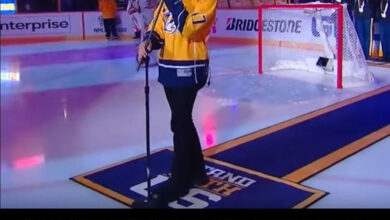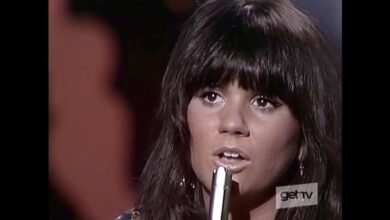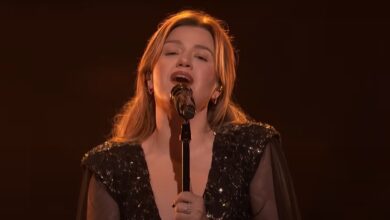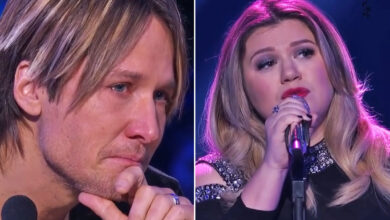Scotty McCreery’s ‘Hello Darlin’’ Performance at the Grand Ole Opry Rekindles Classic Country Magic
In 2015, Scotty McCreery stepped onto the sacred stage of the Grand Ole Opry and delivered a performance that would echo through the halls of country music history. His rendition of “Hello Darlin’,” a beloved Conway Twitty classic, was more than just a cover — it was a reverent homage to one of country’s greatest voices. In a time when mainstream country often leaned pop, McCreery’s deep baritone and heartfelt delivery stood as a powerful reminder of the genre’s roots. This performance didn’t just delight long-time country fans — it introduced a younger audience to the emotional weight and timeless craftsmanship of a bygone era.
Scotty McCreery, a native of Garner, North Carolina, first captured the nation’s attention in 2011 when he won Season 10 of American Idol at just 17 years old. Unlike many of his peers, McCreery always wore his traditional country influences on his sleeve, citing George Strait, Josh Turner, and Elvis Presley as his primary inspirations. His voice — naturally deep and resonant — quickly became his signature, helping him carve a unique space in the modern country landscape. But beyond the voice, it was his humility and reverence for country’s golden age that made him a true torchbearer.
“Hello Darlin’,” written and first performed by Conway Twitty in 1970, is one of the most iconic heartbreak songs in country history. The opening line, spoken rather than sung, “Hello darlin’, nice to see you,” became a cultural touchstone. The song spent four weeks at No. 1 on the Billboard Hot Country Singles chart and remains one of Twitty’s most recognizable hits. For McCreery, choosing this song was not random — it was intentional. He grew up hearing it on country radio and understood its emotional gravity. The decision to sing it live at the Opry was a bold and deeply respectful move.
The performance itself was stripped down and elegant. Backed by a traditional country ensemble, McCreery let the lyrics do the heavy lifting. There were no overblown vocal flourishes or modern reinterpretations — just a pure, emotionally honest rendition. His delivery of the iconic spoken intro drew immediate applause from the audience, and as the performance unfolded, a hush fell over the room. His vocal tone echoed Twitty’s without mimicking him, striking a balance between tribute and individuality.
Audience members at the Grand Ole Opry that night responded with heartfelt enthusiasm. For older fans, it was a nostalgic return to the era of slow-dancing ballads and AM radio. For younger viewers, it was likely their first real exposure to Conway Twitty’s legacy. The video of the performance quickly gained traction online, shared widely across social media platforms, especially among fans of traditional country. Many praised McCreery for “keeping it country,” a phrase that would become attached to his artistic identity in the years to follow.
McCreery’s performance of “Hello Darlin’” helped fuel a broader conversation about the place of traditional country music in a changing industry. As bro-country and pop-country dominated the charts, McCreery stood out as a young artist who embraced fiddles, steel guitars, and slow, emotional ballads. His cover didn’t just honor Conway Twitty — it challenged the notion that classic country had no place in the modern era. It served as a bridge between generations, bringing authenticity back into focus.
The impact on McCreery’s career was immediate and meaningful. Already successful from American Idol, this performance deepened his credibility within the country music community. Veterans of the industry took notice, and country radio began to treat him not just as a TV-show winner, but as a serious artist with a long-term future. It also opened doors for appearances at other iconic venues and collaborations with artists who shared his love for classic country.
“Hello Darlin’” also set the tone for McCreery’s later work. His albums leaned further into storytelling and traditional instrumentation, avoiding the overproduction common in contemporary country. His reverence for the genre’s forefathers would become a hallmark of his identity, and he often cited this Opry performance as one of the most meaningful moments of his early career. It helped shape not just his sound, but his mission: to protect and preserve the soul of country music.
McCreery’s rendition sparked a small but notable revival in covers of classic country ballads by younger artists. His performance encouraged others to revisit the catalogues of Merle Haggard, George Jones, and Loretta Lynn. At a time when many believed that traditional country was fading into obscurity, McCreery’s interpretation proved otherwise — reminding fans and artists alike of the emotional power that simplicity and sincerity can hold.
Over the years, other artists have also tackled “Hello Darlin’,” but few have done so with the same emotional restraint and respect that McCreery showed. His version stands out not because it reinvented the song, but because it didn’t try to. It leaned into the original’s strength — its plainspoken heartbreak — and gave it new life for a new generation.
At the time of this performance, McCreery was navigating the transition from teen star to mature artist. Just months before, he had released his sophomore album and was preparing for a string of tour dates with Rascal Flatts. The Opry performance became a key moment in proving that he wasn’t just a flash-in-the-pan — he was here to stay. It gave his career the depth and staying power that many young stars struggle to achieve.
A decade later, McCreery’s “Hello Darlin’” still circulates on YouTube and social media, continuing to draw praise and heartfelt comments. Fans often share memories of hearing the song in their youth or being introduced to it through McCreery’s cover. It’s one of those performances that transcends time, not because of flash or innovation, but because of heart.
The influence of that night in 2015 can still be felt in the way McCreery approaches music. His later work continued to blend modern themes with traditional sounds — a formula that resonated with both young fans and older listeners. It helped lay the groundwork for a more roots-oriented wave of country artists who now balance chart ambition with genre fidelity.
In the years that followed, McCreery has received numerous accolades, including ACM and CMT awards, and continued to perform at the Opry regularly. Though “Hello Darlin’” was not his original song, it became a defining moment in his journey — a night when he didn’t just perform a classic, but joined its legacy.
In the grand narrative of country music, some performances serve as more than just moments — they become markers in time. Scotty McCreery’s “Hello Darlin’” at the Grand Ole Opry was exactly that. A young man stood beneath the Opry lights and reached back across decades, not to imitate, but to honor. And in doing so, he reminded us that great country music never ages — it simply finds new voices to carry it forward.



